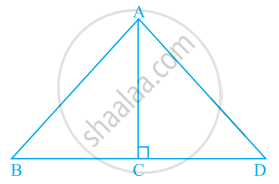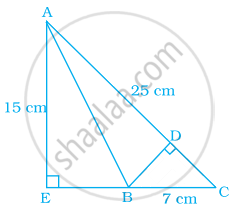Advertisements
Advertisements
प्रश्न
The area of a triangle with base 4 cm and height 6 cm is 24 cm2.
विकल्प
True
False
उत्तर
This statement is False.
Explanation:
We know that, area of a triangle = `1/2` (Base × Height)
Here Base = 4 cm and Height = 6 cm
∴ Area of a triangle = `1/2` × 4 × 6 = 12 cm2
APPEARS IN
संबंधित प्रश्न
If P(–5, –3), Q(–4, –6), R(2, –3) and S(1, 2) are the vertices of a quadrilateral PQRS, find its area.
In each of the following find the value of 'k', for which the points are collinear.
(8, 1), (k, -4), (2, -5)
The two opposite vertices of a square are (− 1, 2) and (3, 2). Find the coordinates of the other two vertices.
Prove that the points (2,3), (-4, -6) and (1, 3/2) do not form a triangle.
Prove analytically that the line segment joining the middle points of two sides of a triangle is equal to half of the third side.
If Δ = `|(1, x, x^2),(1, y, y^2),(1, z, z^2)|`, Δ1 = `|(1, 1, 1),(yz, zx, xy),(x, y, z)|`, then prove that ∆ + ∆1 = 0.
Points A(3, 1), B(12, –2) and C(0, 2) cannot be the vertices of a triangle.
In the given figure, if PR = 12 cm, QR = 6 cm and PL = 8 cm, then QM is ______.

In the given figure, ratio of the area of triangle ABC to the area of triangle ACD is the same as the ratio of base BC of triangle ABC to the base CD of ΔACD.

In the given figure, triangle AEC is right-angled at E, B is a point on EC, BD is the altitude of triangle ABC, AC = 25 cm, BC = 7 cm and AE = 15 cm. Find the area of triangle ABC and the length of DB.

